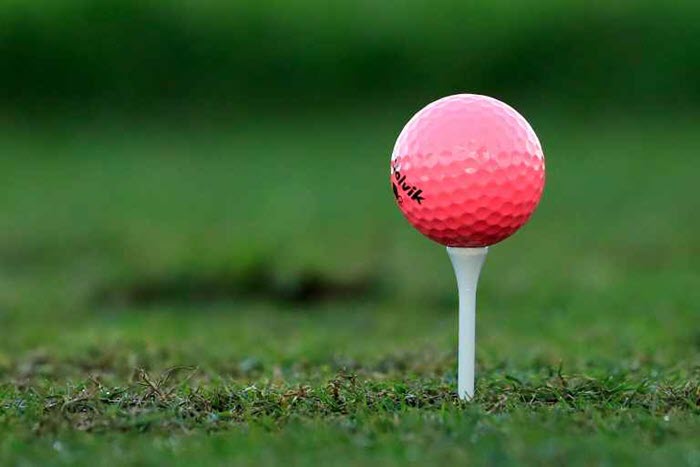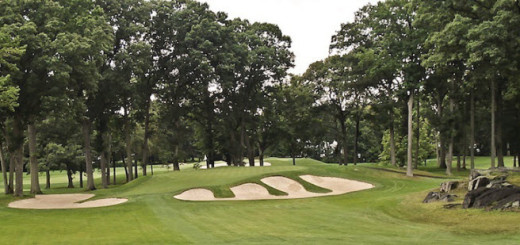Tips for Choosing the Right Golf Ball
There’s nothing quite like the golf ball in the sports world. Tennis players all use the same ball. Bowling balls differ enough so that some will employ two or maybe three to master changing lane conditions. But golf balls? There are dozens upon dozens for golfers to choose from, with new models arriving on the market each year. What’s a golfer to do? Here are some tips for choosing the right golf ball.
Golfer, Know Thyself
Just because Bubba Watson has a favorite golf ball doesn’t mean its right for you. Do you need more distance with your shots, or are you directionally-challenged? Seniors and women often have slower swing speeds, so sometimes a distance-enhancing ball may help. Speed and length not a problem? If you’re interested in shooting low scores you know that most strokes are saved from 100 yards in, and you’ll want a golf ball that provides more control around the green. Once you decide where you fall on the spectrum between distance and control, you can proceed.
A Word about Golf Ball Construction
At least players don’t have to worry about the size of the golf ball anymore. Since the 1980s, the ball has been standardized at 1.68-inches in diameter; so-called “British balls” were slightly smaller up to that time. But everything else has gotten a whole bunch more complicated since golf balls were constructed with boiled goose feathers stuffed into leather pouches.
For the better part of 100 years, golf balls were put together with a core, surrounded by a wrapping of rubber bands, and covered with a dry sap from a tropical sapodilla tree known as balata. The balls responded well off the clubface, but cut easily from misplayed iron shots and went out of round. Better players favored these balls for the extra spin and control they provided.
These balls were joined on the market in the 1970s by “2-piece balls” that boasted a solid core and a hard plastic cover called Surlyn, manufactured by the DuPont company. These balls, Top-Flite being the most famous, were resistant to the abuse of the average weekend player. These balls flew further which every golfer loved, but did not have the feel of balata balls around the green.
Many of today’s golf balls are all about “high-energy” core technology. Some manufacturers use up to five layers to construct their golf balls. Covers are blends of polymers to deliver gradations of feel. Golf ball construction is how manufacturers differentiate themselves in the marketplace.
Spin Rates and Distance
Balls that are designed to travel furthest have low spin rates. Some longer distance options also come with the added bonus of being straighter, since many of the dimple patterns used to create the low spin rates also make a poor shot less likely to bend left or right. What’s not to love?
Well, some players like to be able to “work” the ball around a golf course and low-spin balls are harder to control around the green. In those instances, a soft-covered ball adds more spin to shots, allowing for more precise landings and a little more “stick.” But while we all “ooh” and “ah” when an approach shot sucks back on a green, most players need a little boost to even get close to the green. How often do you leave chip shots and putts short of the hole? If the answer is “a whole heck of a lot,” then a low spin ball is probably your best choice for the short game as well as the long game.
Compression Rates and Feel
Golf ball compression is what happens at impact when the club head meets the ball and “compresses” it into launch. Until very recently, golf balls were sold as 100-compression, 90-compression and 80-compression – a narrow range that was all but meaningless in practice. The thinking is that a hard swinger will benefit from a “harder” 100-compression ball, and smoother swings –such as those produced by seniors and women — will let more out of a “softer” 80-compression ball.
These days, manufacturers are dialing the compression of some models down, way down. Like under 50. So much so that the numbers have been replaced by designations of “high compression” and “low compression.” The quest is for feel. To see if these balls perform for you, cast aside your driver and hit some with your irons to see if you can tell the difference. Take note of the ball flight and distance. If the results are as long as your usual ball – or perhaps even better – your swing may be tailored to low compression golf balls.
Do Dimples Matter?
Back in the 1970s a company called Polara brought out a golf ball with rows of different dimples that was supposed to banish banana balls and ugly duck hooks from the game forever. You’ve probably never heard of Polara – because the ball worked and the USGA banned it for play. So, yes, dimples matter. The dimples shouldn’t be your first concern but there’s a reason companies still fiddle with dimple design. If there’s an iota of extra distance and control to be squeezed out of a golf ball from its dimples, it’s worth a try.
To learn more about what kind of golf ball is right for you, check out our golf ball buyer’s guide.



